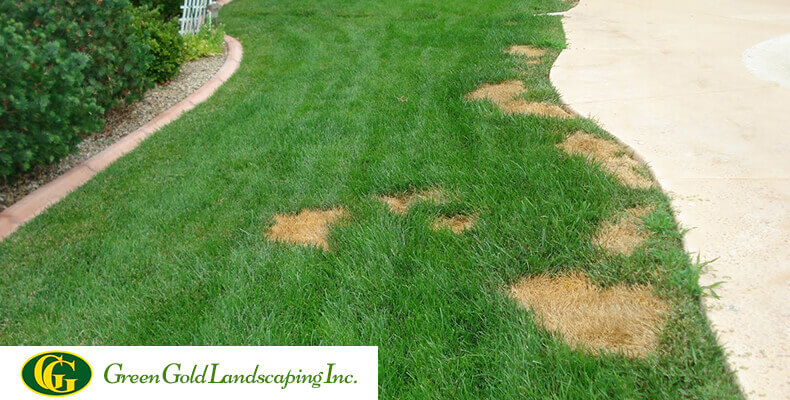11 Jan
How to Fix Dead Spots in Lawn?
Posted By Ervin in Gardening
When you have dead spots on your lawn, that only never seem to green up again, you could have a problem. The excellent information is the dead spots on your lawn may be treated, turning that brown into green. You can also manage the hassle that created your dead spots and helps maintain your yard healthy, regardless of what time of year it is.
What causes Dead Spots in Lawn
To prevent dead spots in the lawn from springing up again, you will need to treat them. Those tips will let you avoid brown or dead spots form reoccurring once you ought re-seeding.
- Watering – In case your lawn isn’t getting sufficient water, this can cause dead spots to occur. A common rule with a longtime grass lawn is to water once per week over the winter, or every 2-3 days throughout the spring. When you have a problem remembering to water your lawn, you may need to establish a habitual. Water your garden on the same days of the week, and make sure all of your equipment including sprinklers are working efficiently.
- Pet Urine – If your brown spots in the garden are because of your pets continuously urinating in the same place, you’ll need to stop this from occurring. You may need to choose a place for your pets to go potty. Another solution is to take a walk your dog on a chain at various times during the day.
- Pests – There are several pests which can reason issues with your lawn. Pests and grubs including sod webworms, chinch bugs, and white grubs, can cause dead spots in your garden. The first aspect you’ll need to do is perceive which pest is causing the problem, as each pest will need to be treated individually, it is often best to call a lawn care or landscaping professional if you suspect pests are the reason of brown spots.
Once you’ve treated your lawn and re-seeded the dead spots, your garden needs to begin to green up again, giving you the great lawn on the block.
How To Fix Those Dead Spots In Lawn
Grass seed germinates nicely in more relaxed, restraint situations. Then the younger roots get off to a great begin in soil that’s still reasonably warm for an increase. Keeping away from patching throughout warm summer months is okay. Young grass plants are more prone to heat and drought stress than established grass.
Here is the method:
- Clean out: any matted, dead grass and other trash. Grass will germinate and root great while it gets into touch with soil.
- Extricate the soil: At least damage the surface, or better yet, dig and loosen the top two or three inches. If the soil is especially poor, work in a little compost or similar organic be counted. Don’t just toss seed on top of the hard ground.
- Scatter grass seed over the loosened soil: Select a good-quality seed that’s geared on your weather, including branded grass seeds. Gently scratch in the seed so that some of it is integrated into the top quarter-inch of the soil and some are at or close to the surface. Lightly tamp for proper seed/soil connection.
- Fertilize: Get new increase off to a great begin by scattering a small amount of lawn fertilizer particularly formulated for fresh grass.
- Mulch and water: Top the patched region with a light layer of straw or chopped leaves – just sufficient to cover the ground. This facilitates slow evaporation, discourages seed washouts and develops germination. Water adequate to wet the top 2 inches of soil.
Streamline the method through the use of products that contend with or more of those steps in one. For instance, using branded grass seed fertilizer as a starter fertilizer included into bits of paper mulch. It looks after the fertilizer and mulching steps at the same time. The paper mulch decomposes on its own, also saving the step of clearing off straw when the grass seed grows.
Regardless of how you patch, it’s very crucial to maintain the seedbed continuously damp until the seed is up. Dry seeds won’t germinate thoroughly at all, and letting the soil go dry after a new grass plant has damaged out of its seed coat may also kill it before it has a potentiality to get going.
In dry, hot climate, you’ll probably want to hose down the floor once or twice a day. Sometimes the grass grows to about 2 inches tall, reduce watering to once every few days. Start mowing while the young grass reaches about 4 inches tall. After one complete season, your patched region has to be as established as the rest of the lawn. By then, you likely won’t have the ability to tell the difference unless those dogs, grubs, and fungi decide to pay another visit.
Need to Fix Dead Spots on your Lawn? Contact Green Gold Landscaping which provides professional Residential and Commercial Lawn care, Maintenance services in all over Westchester County NY or Call 914-882-5459 for assistance.









